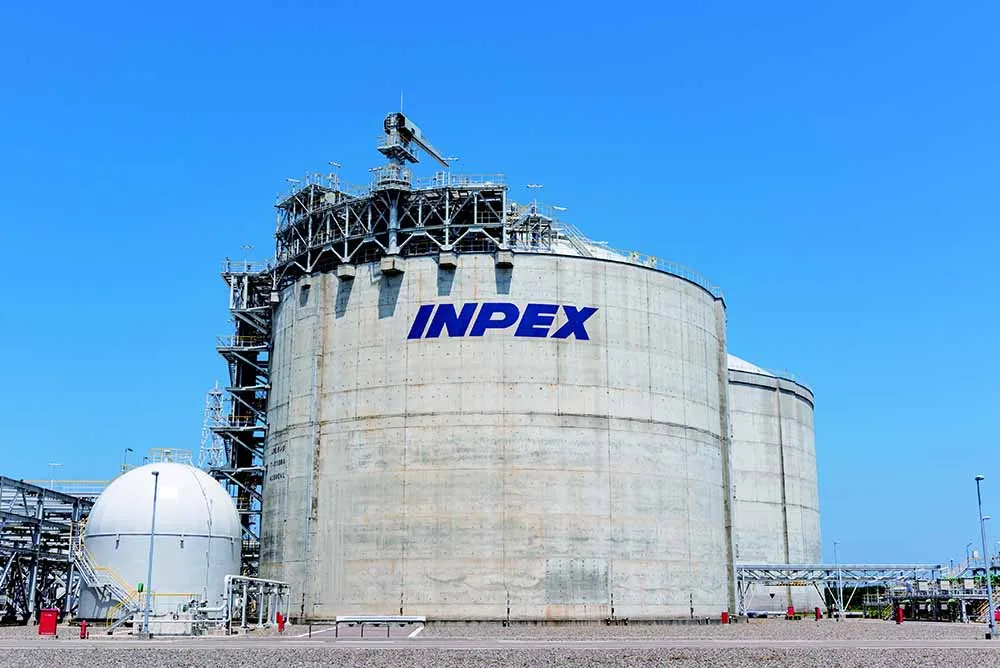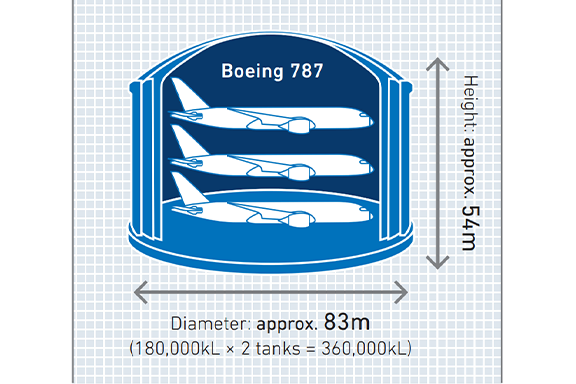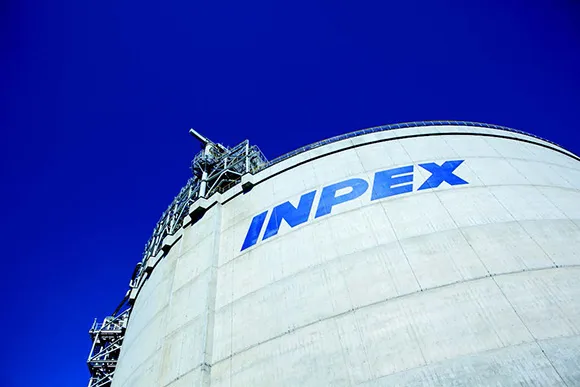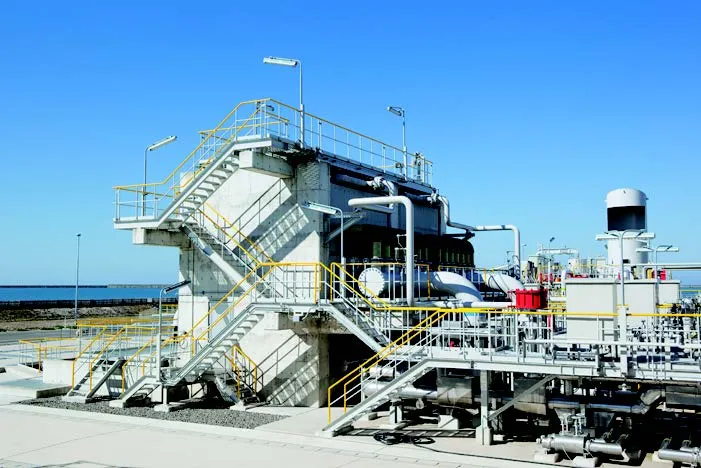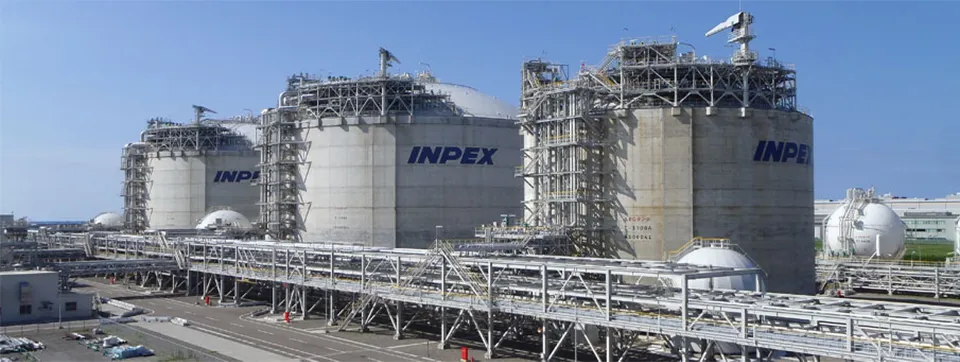
| Contract area (block) | Project status | The maximum production capacity | Venture company (established) | Interest owned (*Operator) |
|---|---|---|---|---|
| Naoetsu LNG Terminal | In operation | 8.25 million m3/day | INPEX JAPAN, LTD. (Oct. 1, 2024) |
|
Project History
| August 2008 | Final investment decision |
|---|---|
| July 2009 | Start of construction |
| August 2013 | First LNG tanker docks |
| December 2013 | Begins commercial operations |
| October 2018 | First LNG tanker (Pacific Breeze) carrying Ichthys LNG docks |
| February 2019 | LNG tanker co-owned by INPEX (Oceania Breeze) docks for the first time |
| April 2022 | Achieves record of 3 million hours of incident-free operations |
| March 2023 | Receives 100th tanker |
| April 2024 | Revises maximum production capacity of existing carburetors from 7.5 million Nm3 to 8.25 million Nm3 |
Located at a key point in our natural gas pipeline network, the Naoetsu LNG Terminal in Joetsu City, Niigata Prefecture, receives LNG imported from overseas, re-gasifies it, and, after adjusting its calorific value and combining it with domestically produced natural gas from the Minami-Nagaoka Gas Field, supplies it to customers. In December 2023, the terminal marked its 10th anniversary of operations, and we will continue to strive to ensure the terminal's operational safety and stability.
Naoetsu LNG Terminal
- Location
- 12 Yachiho, Joetsu City, Niigata Prefecture
- Lot area
- Approx. 25 ha
- Main facilities
- Berth, LNG tanks (180 thousand kiloliters x 2; there is room to install one additional tank in the future), vaporization facilities, heat adjustment facilities, etc.
- Construction
- The groundbreaking ceremony was held in July 2009, and construction started in August of the same year
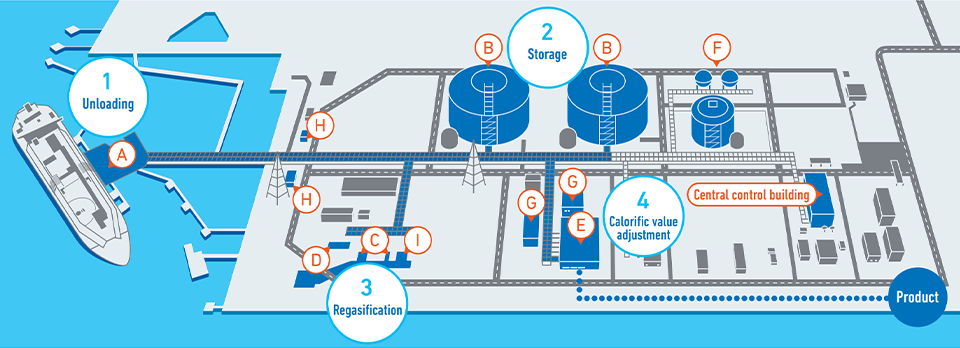
The LNG received from LNG ships is re-gasified and adjusted for calorific value before it is sent to the pipeline network as product gas.

A Unloading arm
The unloading arm is a cargo-handling facility that unloads LNG and cryogenic LPG from tankers and sends it to the storage tanks. The LNG unloading arm is equipped with a hydraulic quick coupler, which enables safe and reliable connection and disconnection operations with the ship-side flange.

B LNG Tanks
- Above-ground PC tanks (180,000 kL x 2)
- The unloaded LNG is stored in two LNG tanks each measuring approximately 54m in height and 83m in diameter. The tanks' total capacity is 360,000 kL. Each tank is large enough to accommodate three Boeing 787 aircraft.
C Open Rack Vaporizer (ORV)
The ORV transforms LNG, a liquid at -162 degrees Celsius, into a gaseous state by warming and re-gasifying it using the heat of seawater.
D Submerged Combustion Vaporizer (SCV)
This vaporizer is mainly used in emergencies. It burns natural gas and uses the resultant high-temperature combustion gas as a heat source to warm a water tank. The LNG is then re-gasified in heat transfer pipes submerged in the water tank.
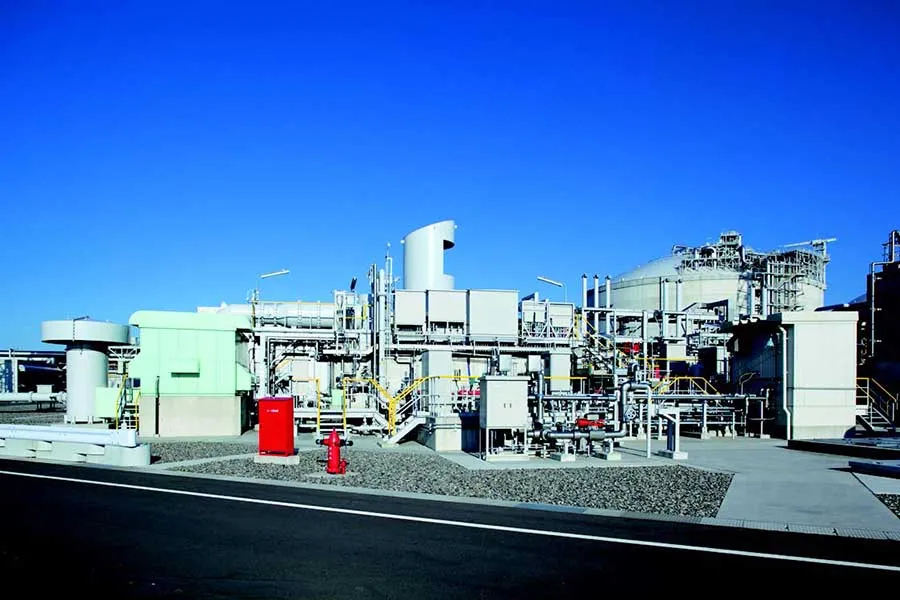
E Heat Adjusting Facility
The natural gas, once returned to a gaseous state, has its heat adjusted by adding LPG in a calorific value adjustment facility. This gas adjusted for calorific value is then sent to the pipeline network as product gas.
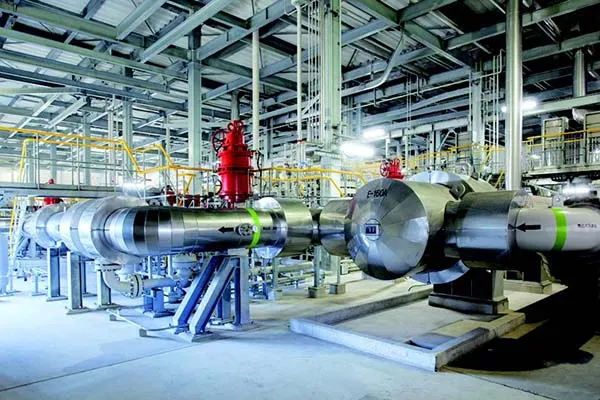
F LPG Tanks
These are tanks used to store LPG used for calorific value adjustment. There are two types: ambient temperature LPG tanks and cryogenic LPG tanks.
-
Ambient Temperature LPG Tank
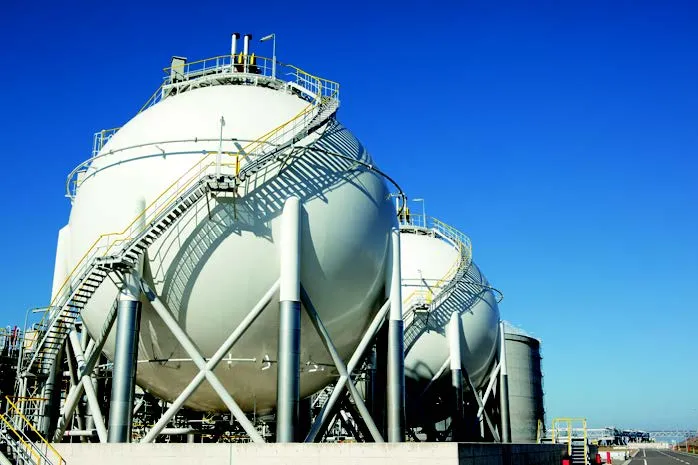
-
Cryogenic LPG Tank
